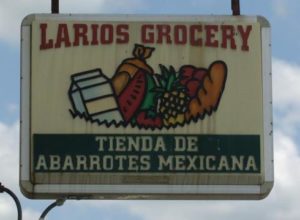From “All-American” to “Hola América”: The United States has now 52.6 million Spanish-speakers, surpassing Spain and becoming the country with the largest number of Spanish-speakers, second only to Mexico… until 2050, when it is expected to reach 132.8 million, making it the largest Spanish-speaking population in the world.
And while the reaction of many has been “Ay, caramba!”, for others, these numbers were somehow expected.
After all, the population often referred to as “Hispanic” is already the largest minority in the USA with 17% of the total American population: roughly 1 of every 6 Americans belongs to this group[2]. Their political presence can be already felt as the “Latino” vote was crucial in the presidential elections in 2004 and 2008. Expect more “Sí se puede!” (Yes, we can!) during the 2016 elections.
Furthermore, its economic strength has grown to the point that the Hispanic population could be considered by itself a sizable country. According to the Selig Center for Economic Growth, the buying power of the Hispanic population in 2012 was USD 1.2 trillion. This would make the US Hispanic community the sixteenth largest economy in the world, with a GDP that surpasses that of Turkey, and is just short reaching that of Indonesia, the fourth most populous country in the world[3].
The Big Enchilada gets Bigger
This community is not only big, but it will get bigger. Beyond the current size of this market number, there is its annual growth, which is expected be 11.7%. If this trend continues, roughly 1 out of every 3 Americans will be a Spanish-speaker by 2050[4].
 Its economic strength is not any less impressive, since Hispanic buying power in the United States has grown at least 100% per decade: from USD 212,000 million in 1990 to USD 978,000 million in 2009, and it is expected to reach USD 1.6 trillion by 2018[5]. Hispanic purchasing power is growing at a faster rate than other communities, such as African American or Native American[6].
Its economic strength is not any less impressive, since Hispanic buying power in the United States has grown at least 100% per decade: from USD 212,000 million in 1990 to USD 978,000 million in 2009, and it is expected to reach USD 1.6 trillion by 2018[5]. Hispanic purchasing power is growing at a faster rate than other communities, such as African American or Native American[6].
The share of the purchasing power of Hispanics from the total in the USA has almost doubled from 5% in 1990 to 9.1% in 2009. In states like New Mexico, it reached 30.9%, while in others like Texas, California and Florida, is between 15.4% and 20.1%[7].
Spanish-speakers remain Spanish-readers and Spanish-listeners
One characteristics of the Hispanic market is its attachment to its native language and other elements related to their heritage. For instance, more than 73% of Hispanic families in the USA use Spanish at home[8]. The size of the community is so large, it is able to preserve Spanish as their every day language.

This attachment explains in part the bilingual signs in an increasing number of stores, the bilingual announcements in more public venues, and the phrase “Para español, presione el 1” that greets clients in more and more American 1-800 telephone numbers. But implications go beyond signs and recorded messages. More sophisticated adaptation and localization efforts are expected to be done to access this huge market. Delivering a clear message that appeals to the inherent cultural and idiomatic characteristics of the audience in their own language could make the difference between a “Sí” and an “Hasta la vista” from a potential client in this segment of the population.
Sources: [1] Instituto Cervantes, “El español: una lengua viva, Informe 2015”[2] U.S. Census Bureau population estimates as of July 1, 2013[3] Jeffrey M. Humphreys, The University of Georgia Terry College of Business, Selig Center for Economic Growth “The Multicultural Economy 2013”[4] Instituto Cervantes, “El español: una lengua viva, Informe 2015”[5] Jeffrey M. Humphreys, The University of Georgia Terry College of Business, Selig Center for Economic Growth “The Multicultural Economy 2013”[6] D. Fernández Vítores (2013), op. cit.[7] Jeffrey M. Humphreys, The University of Georgia Terry College of Business, Selig Center for Economic Growth “The Multicultural Economy 2013”[8] Instituto Cervantes, “El español: una lengua viva, Informe 2015”[/fusion_builder_column][/fusion_builder_row][/fusion_builder_container]



